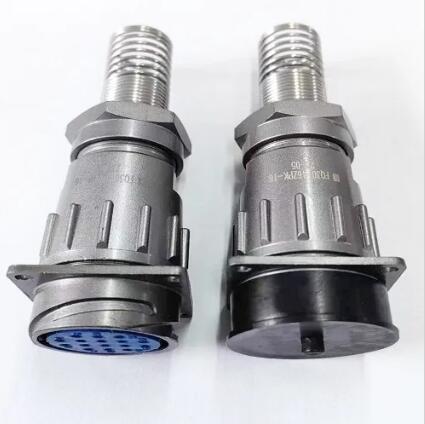An Introduction to Light Rail Sensor Connectors: Enhancing Safety and Efficiency
2024-08-27
The advancement of light rail systems has revolutionized urban transportation by offering a fast, efficient, and environmentally friendly way to move people across cities. A critical component in ensuring the smooth operation of these systems is the light rail sensor connector. This connector plays a vital role in linking various sensors throughout the rail network, enabling the real-time monitoring of train positions, speeds, and other essential data. In this blog, we will explore the basics of light rail sensor connectors, their importance, and how they contribute to the overall safety and efficiency of light rail systems.
What is a Light Rail Sensor Connector?
A light rail sensor connector is a specialized electrical connector designed to facilitate the communication between sensors installed along the light rail tracks and the central control system. These sensors monitor various aspects of the rail system, such as track conditions, train positions, speed, and environmental factors. The connector ensures that data collected by the sensors is transmitted reliably and accurately to the control center, where it can be analyzed and used to make real-time decisions.
Key Features of Light Rail Sensor Connectors
- High Durability: Light rail sensor connectors are built to withstand harsh environmental conditions, including extreme temperatures, moisture, and vibrations. This durability ensures consistent performance even in challenging operating environments.
- Reliable Data Transmission: The connectors are designed to minimize signal loss and interference, ensuring that data from the sensors is transmitted accurately and in real-time. This is crucial for the safe and efficient operation of the rail system.
- Waterproof and Dustproof: Many light rail sensor connectors come with waterproof and dustproof ratings, such as IP67 or higher, to protect the internal components from environmental contaminants.
- Easy Installation and Maintenance: These connectors are designed for easy installation, with features like push-pull mechanisms or threaded coupling, which simplify the connection process. This reduces downtime and maintenance costs, allowing for quick replacements or upgrades when necessary.
The Role of Light Rail Sensor Connectors in Rail Safety
Safety is a top priority in any rail system, and light rail sensor connectors play a crucial role in maintaining it. By ensuring reliable communication between sensors and control systems, these connectors enable:
- Real-Time Monitoring: Light rail systems rely on continuous monitoring of various parameters to operate safely. Sensor connectors ensure that data from sensors is transmitted without delay, allowing operators to monitor train positions, track conditions, and more in real-time.
- Collision Prevention: By connecting sensors that monitor train positions and speeds, these connectors help prevent collisions. The control center can quickly receive data about potential hazards or misalignments, allowing for immediate corrective actions.
- Track Condition Monitoring: Sensors connected via these connectors can detect track wear, temperature changes, or obstructions, allowing for timely maintenance and reducing the risk of accidents caused by track failures.
- Automated Control Systems: In advanced light rail systems, sensor connectors are integral to automated control systems that adjust train speeds, manage signaling, and ensure smooth and safe operations without human intervention.
The Impact on Efficiency and Reliability
Efficiency and reliability are crucial for any public transportation system, and light rail sensor connectors contribute significantly to these aspects:
- Minimized Downtime: The robust design of these connectors reduces the likelihood of failures, ensuring that sensors remain operational and that the rail system can function without interruptions.
- Energy Efficiency: By providing accurate data on train positions and speeds, sensor connectors help optimize train movements, reducing energy consumption and improving overall system efficiency.
- Enhanced Passenger Experience: Reliable data transmission allows for better scheduling and more accurate arrival times, leading to a smoother and more predictable travel experience for passengers.
Conclusion
Light rail sensor connectors are indispensable components in modern urban transportation systems. They ensure the reliable transmission of critical data, which enhances safety, efficiency, and reliability across the entire light rail network. As cities continue to invest in and expand their light rail systems, the role of these connectors will become increasingly important in delivering a safe and efficient public transportation experience.



